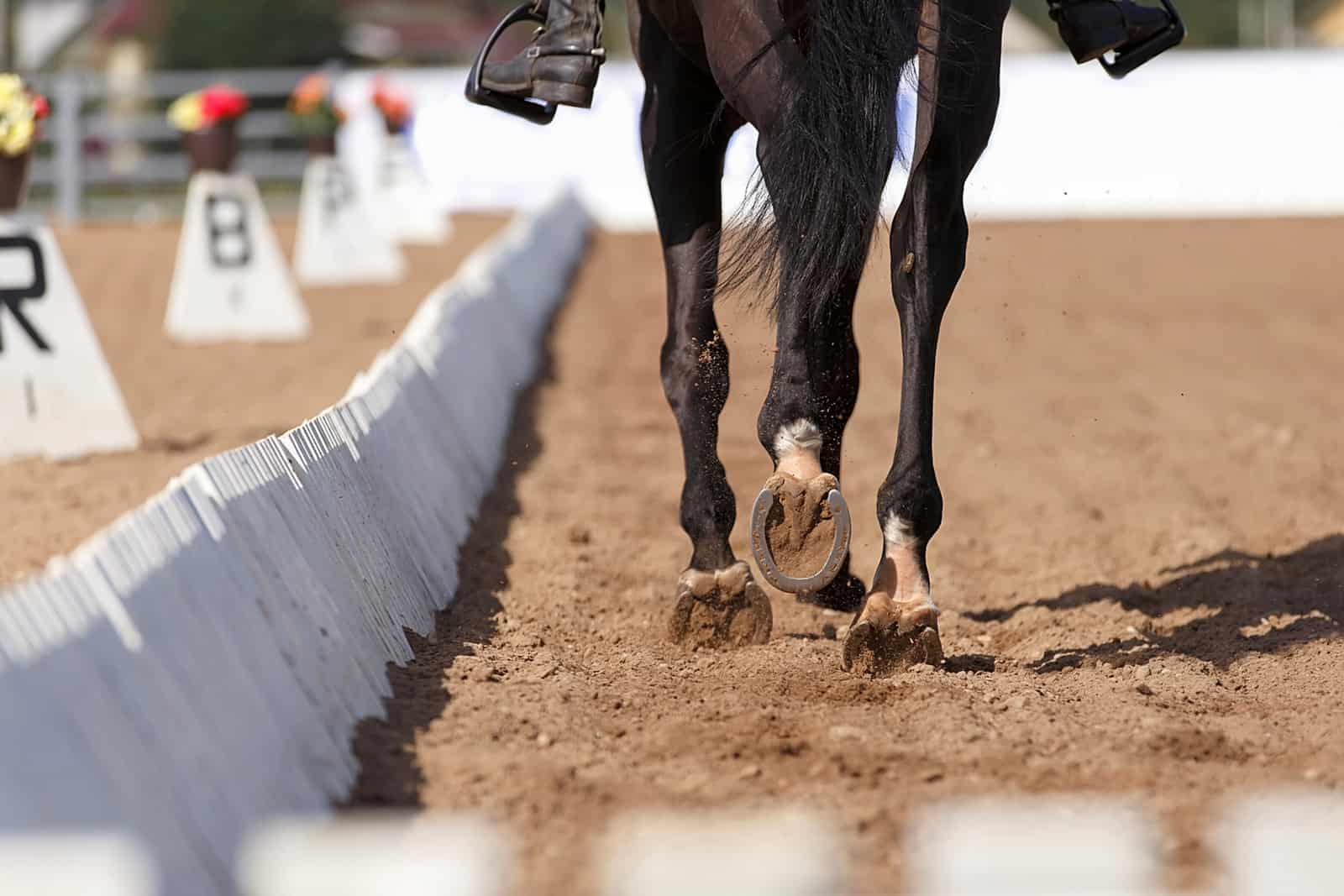Shoe Type Likely Doesn’t Change Horse Movement
- Topics: Article, Gait Patterns, Hoof Care, Shoeing, Veterinary Practice

“The weight of the shoe seems to be what’s causing an effect on horses’ biomechanics above the fetlock, more than the design of the shoe,” said Joëlle Stutz, PhD candidate working under Antonio Cruz, PhD, of the Swiss Institute of Equine Medicine (ISME), at the University of Bern Veterinary School in Switzerland. Stutz presented her work at the 12th annual Swiss Equine Research Day, held April 6 in Avenches.
Stutz, along with Cruz’s research group, investigated the way horses moved when going barefoot or wearing three different kinds of shoes: an egg bar shoe, a rockered toe shoe, or a traditional shoe. They tested the shoes on 10 healthy Franches-Montagne stallions, which wore each kind of shoe (or no shoes) for four consecutive days. The horses worked on a treadmill and in a soft-surface arena while wearing eight inertial movement sensors on their limbs above the fetlocks, hocks, and knees (the researchers wanted to focus on how shoes affect a horse’s movement beyond his feet).
The “novel system” that Cruz’s group is helping develop allows researchers to simultaneously record spatial and temporal gait parameters such as stride duration, knee and hock joint range of motion, and certain angles during each stride, Cruz said
Create a free account with TheHorse.com to view this content.
TheHorse.com is home to thousands of free articles about horse health care. In order to access some of our exclusive free content, you must be signed into TheHorse.com.
Start your free account today!
Already have an account?
and continue reading.

Written by:
Christa Lesté-Lasserre, MA
Related Articles
Stay on top of the most recent Horse Health news with











